9.5: Light Modification and Control
- Page ID
- 128698
What Do Light Modifiers Do?
It is easier to reduce the intensity of light than it is to increase it. With these modifiers, you can reduce the intensity of light, block light, change the shape or color of light, or turn hard light into soft light.
Barn Doors
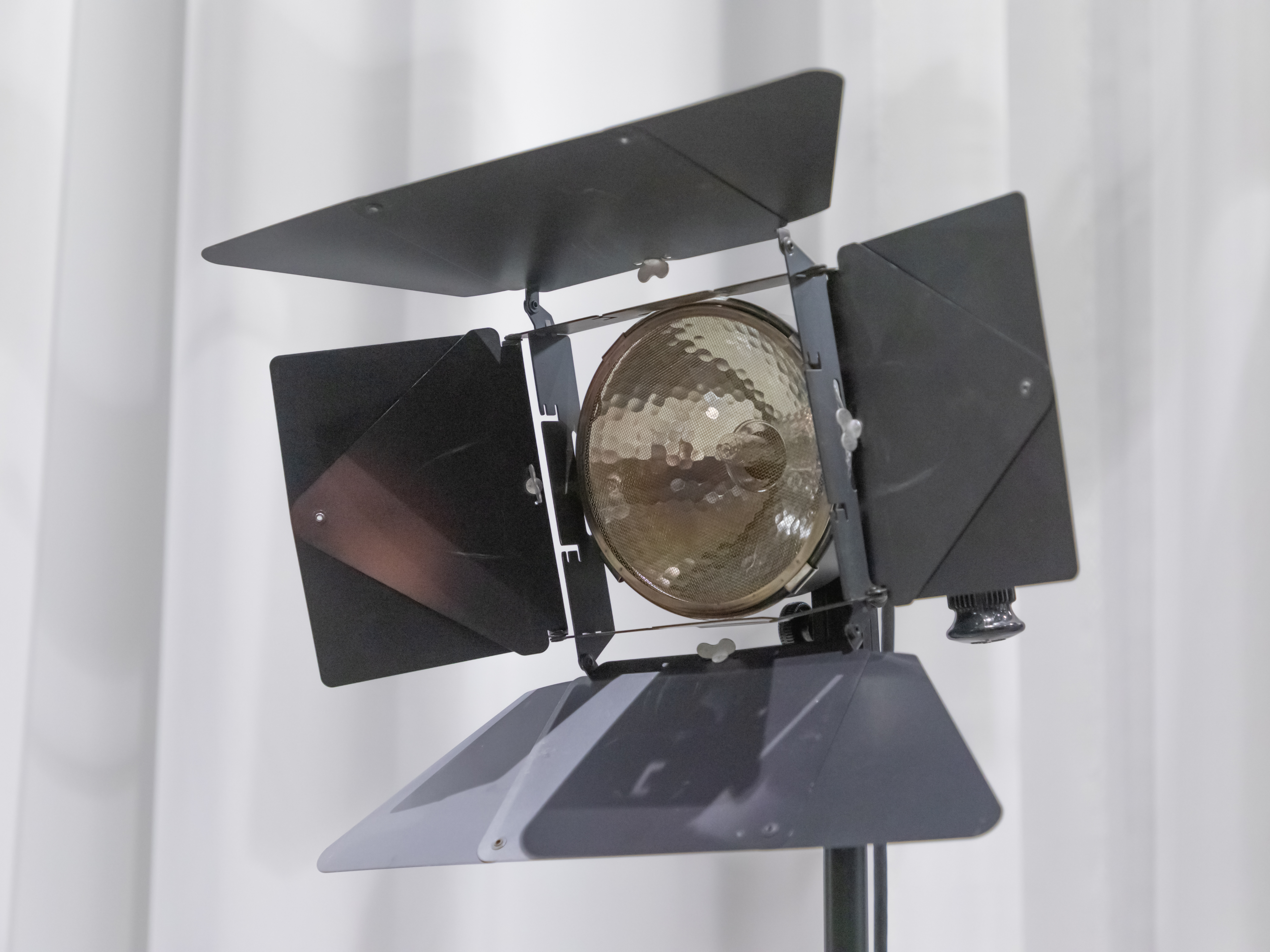
Barn doors allow users to control the beam of light coming out of the lamp. They are most commonly associated with Fresnel lights but can be put on a number of other lights. Barn doors are four flaps on all sides of the light (See figure 9.5.1). You can narrow the light into a sliver or use them to make sure one light does not affect the cast beam of another light. This overlapping of light is called bleeding, which is something lighting directors want to avoid.
Umbrellas & Softboxes
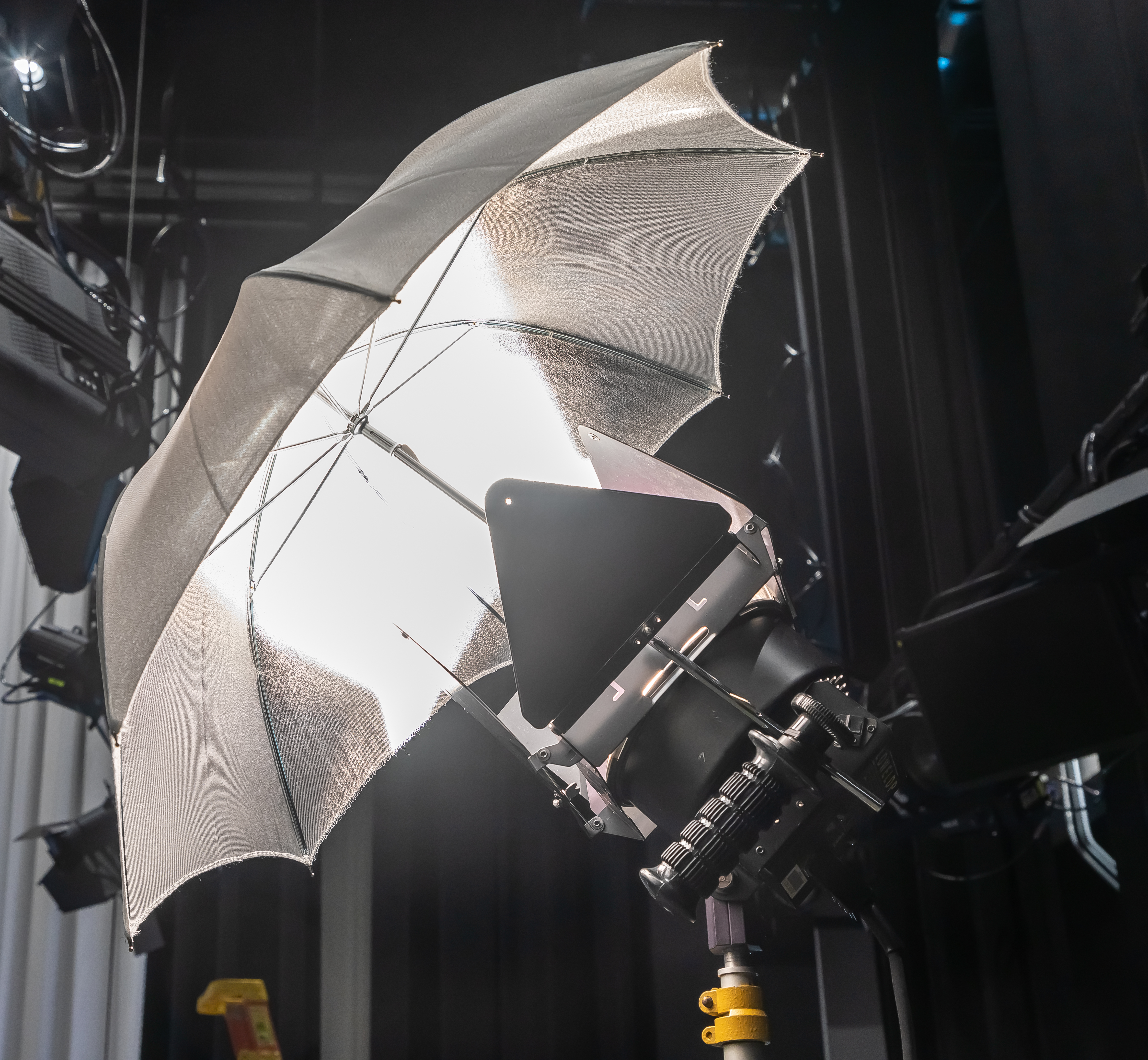
Umbrellas are built like a typical umbrella, except the material used on top is either made of a white diffusion material or a silver or gold reflective surface. You can attach an umbrella to a hard light to turn it into a soft light (See figure 9.5.2). When the umbrella is made of diffusion material, you shine the light through it. If the umbrella is made with reflective material, then you point the light away from the subject and use the umbrella to bounce the light back onto the subject.
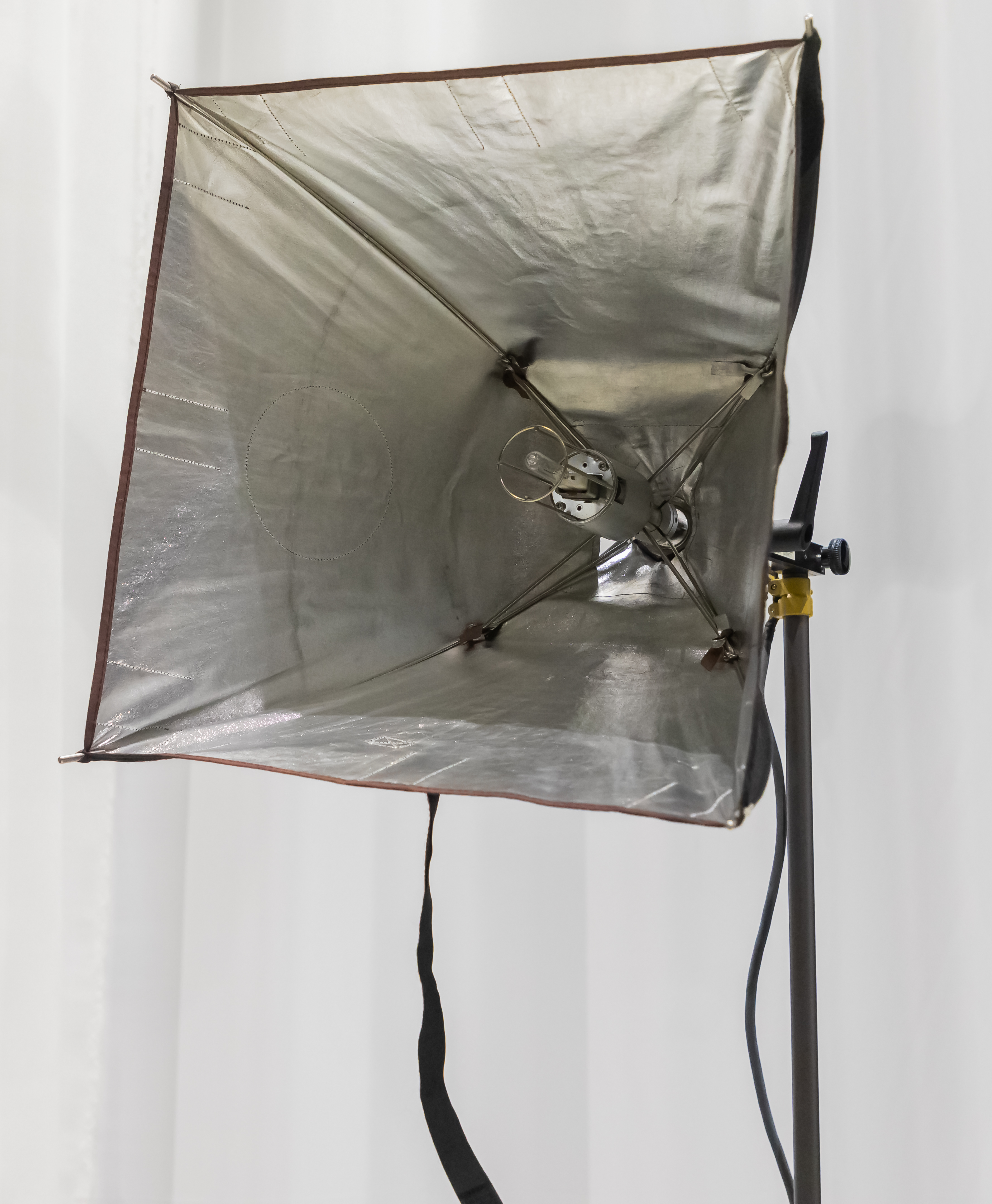
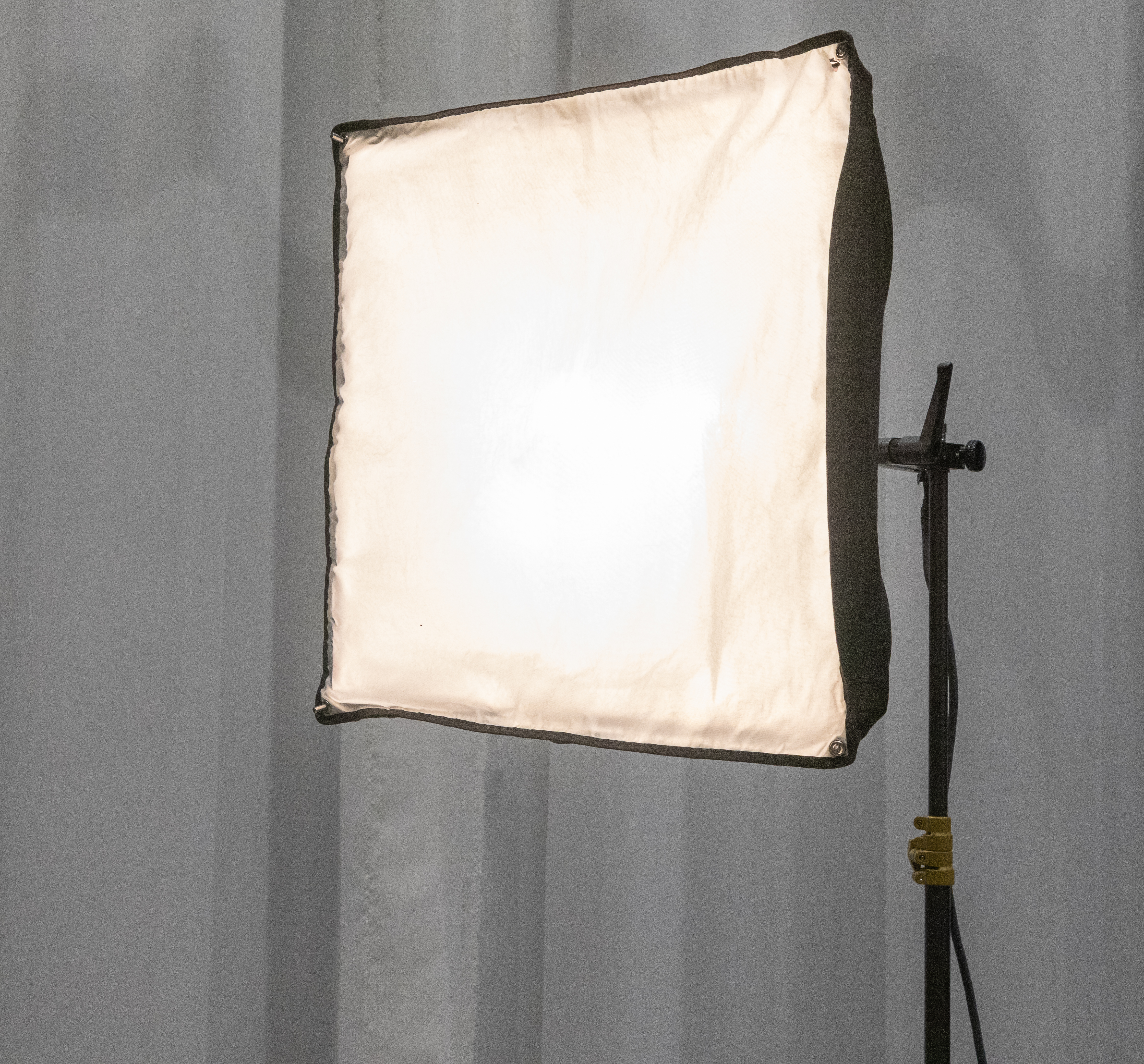
A softbox is almost a combination of both types of umbrellas. In a softbox, the light is in the middle of a square (hence box) or circle made to collapse for storage or open similar to an umbrella. The inside of the softbox is made with silver reflective material to bounce the light. A diffusion material that softens the light is placed on the front of the box (See figure 9.5.3).
Reflectors
Reflectors have circular frames that can be folded for storage. The frame stretches out different reflective materials, like silver or gold, or it can have a white diffusion surface that softens the light being bounced back (See figure 9.5.4). Reflectors are commonly used outdoors when working with sunlight to use the sun to illuminate the subject or to soften the sunlight hitting the subject. They can also be used with production lights to reflect light already on the set back to fill in shadows on the subject.
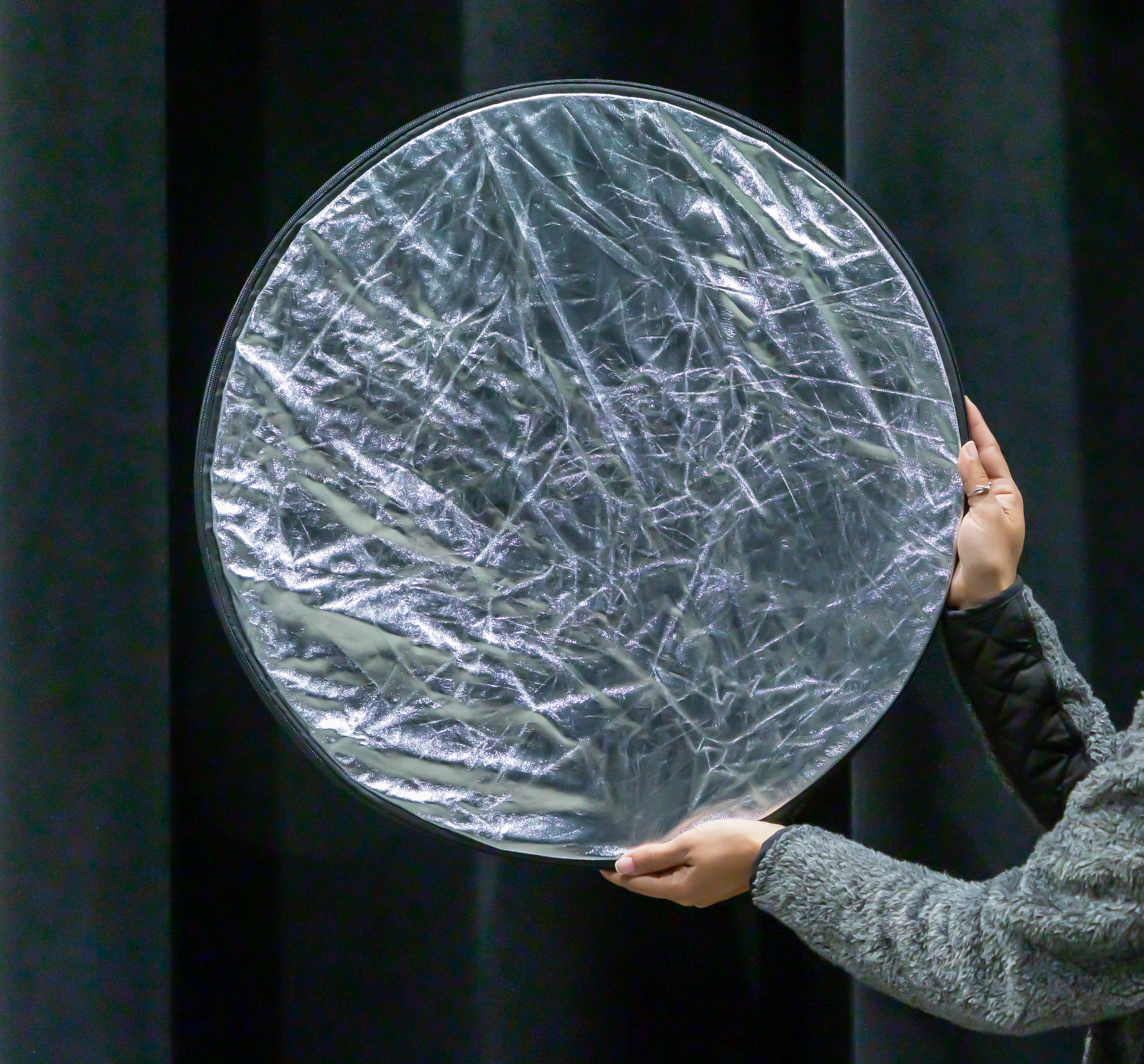
Flags
Professional flags are black rectangles of various sizes that can be attached to a light or a stand to block light (See figure 9.5.5). This is useful when you have lots of lights and do not want them to bleed into each other or narrow the beam to not hit a specific part of the set. A flag can be anything that blocks light from hitting an object or bleeding into another light, but professional ones are made to withstand higher levels of heat from lights. If you use anything other than professional-grade materials to block light, make sure you do not put it close to the light or it will start a fire.
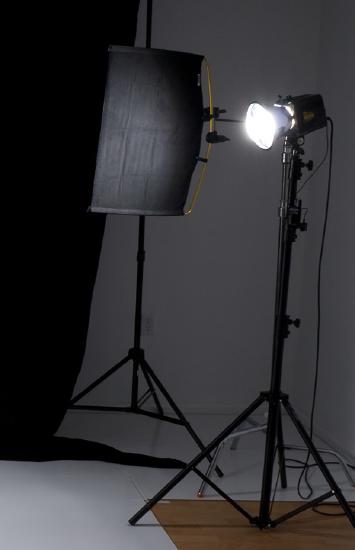
Black Foil/Cinefoil
Black foil (or Cinefoil) is a thick aluminum foil that is covered in black (See figure 9.5.6). It can be used as a flag, but it can be shaped into whatever form you need for your production. For example, you can cut long, thin rectangles into the foil to mimic the sun or moon coming in through blinds. Black foil is also built to withstand high temperatures from lights, which makes it safe to put on the front of the light.

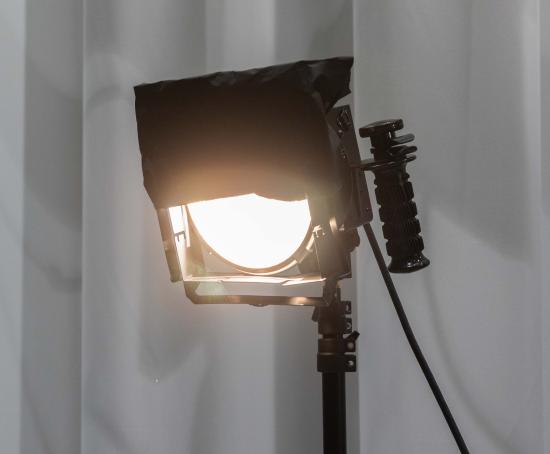
Diffusion Gel & Tough Spun
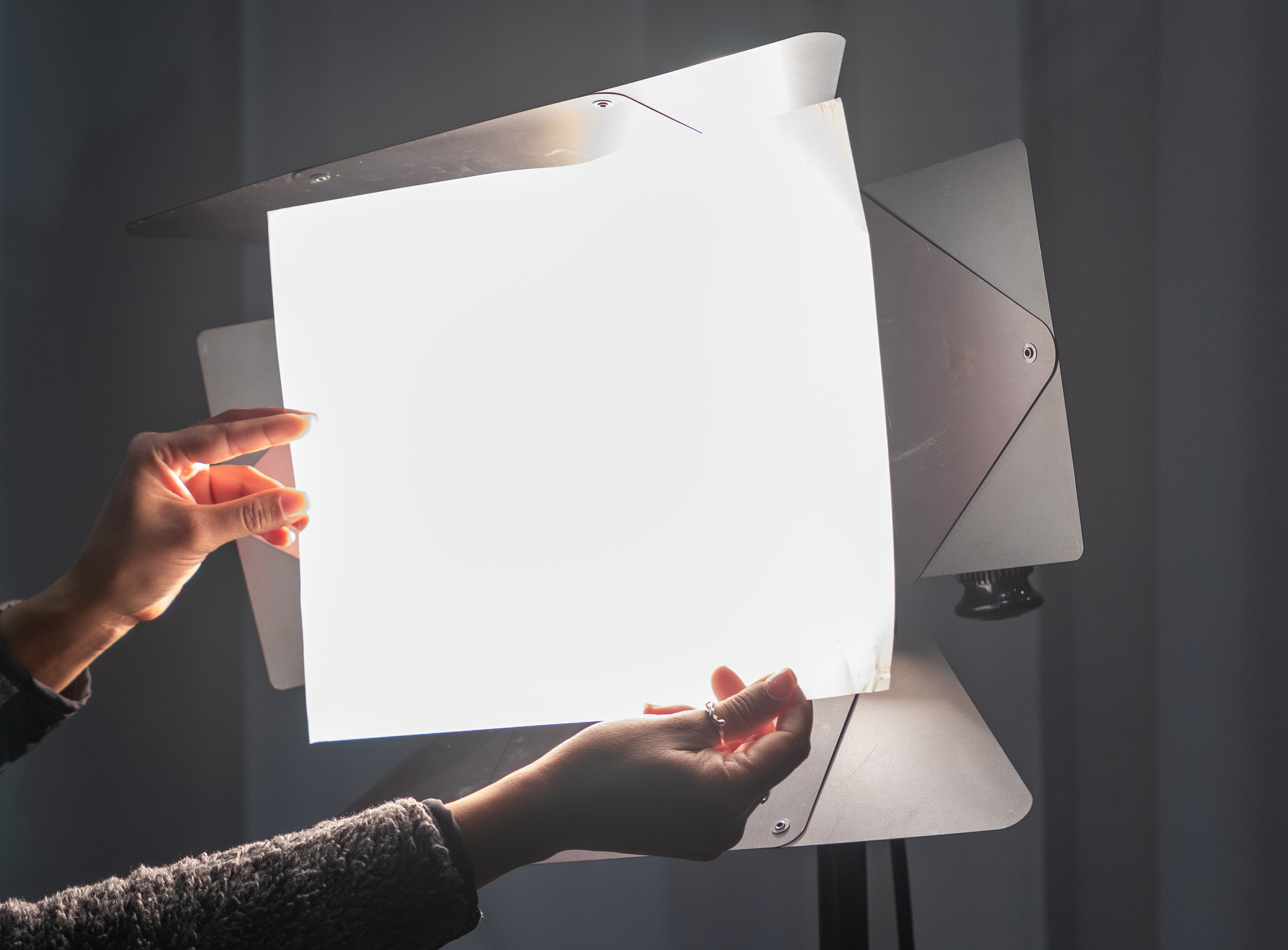
Diffusion gels, sometimes called frosted gels, feel like sheets of thin plastic with a frosted white covering (See figure 9.5.7). This cuts down the intensity of light and softens the light. These are made to withstand heat from lights.
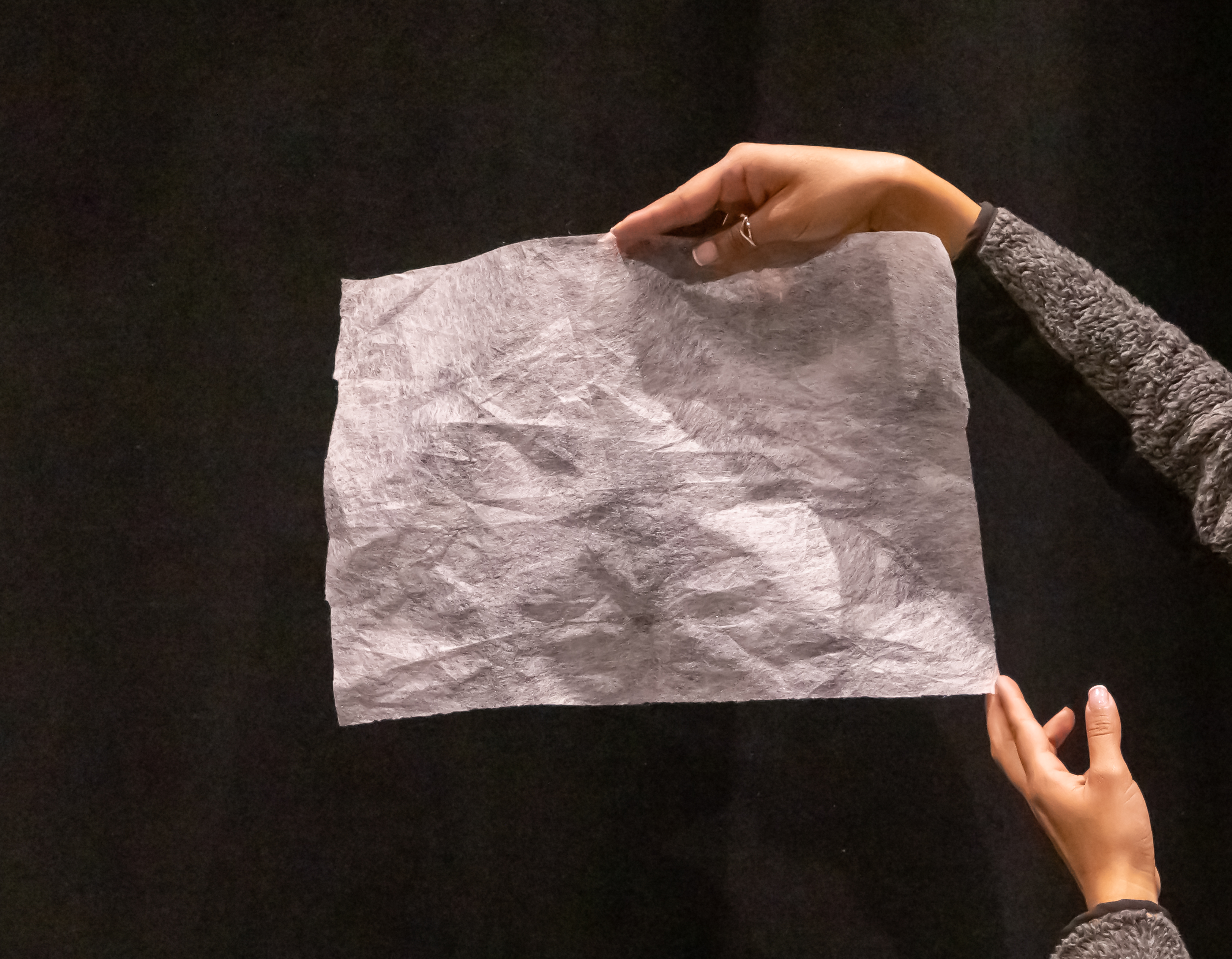
Similar to diffusion gels, tough spun looks and may even feel like a used dryer sheet, but is made of professional-grade material to withstand high temperatures (See figure 9.5.8). Tough spun will also reduce light intensity and soften the light. To be clear, do not use dryer sheets to replace tough spun because you will start a fire. Although they might look and feel similar to dryer sheets, tough spun is made of different materials.
Color Gels
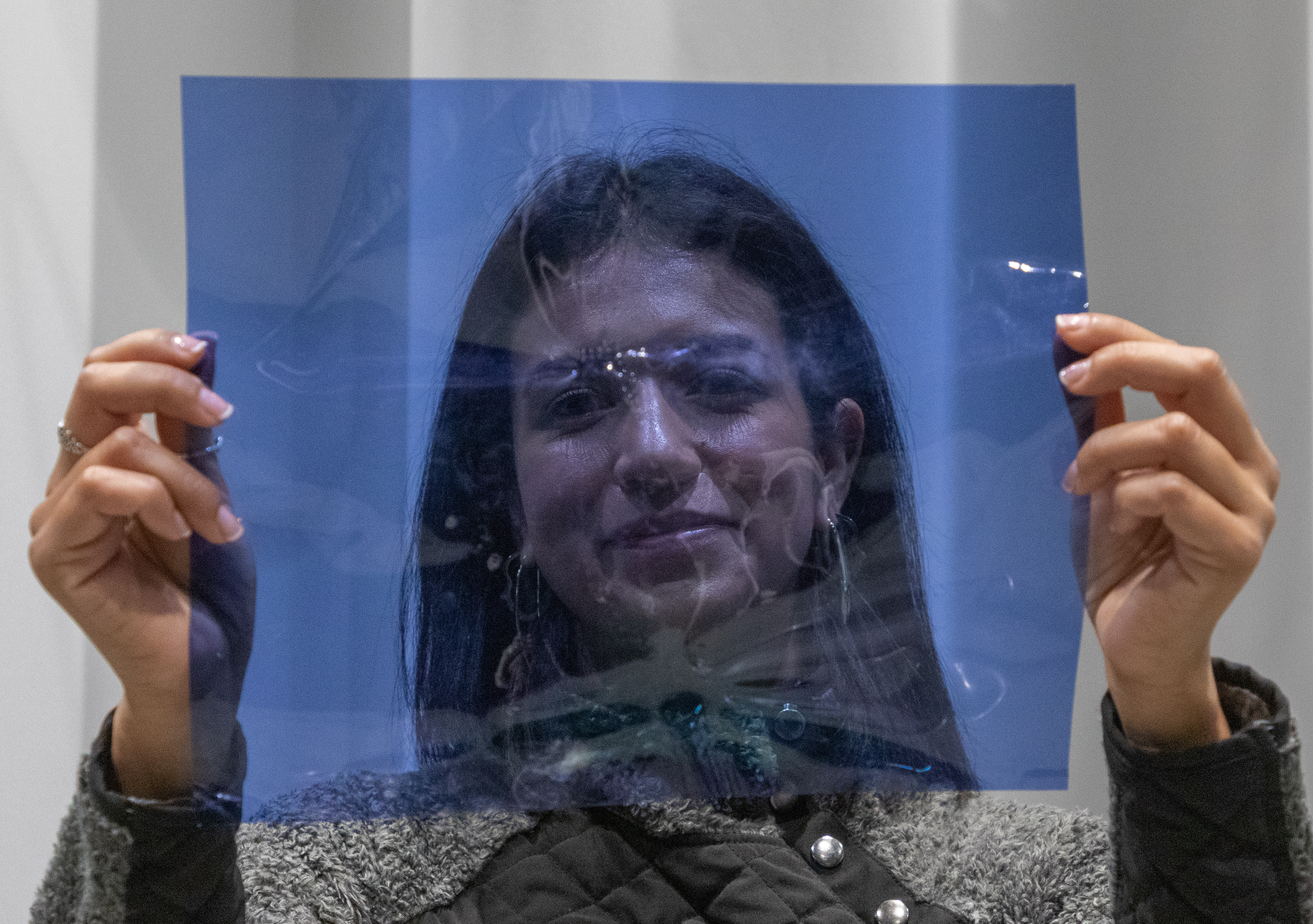
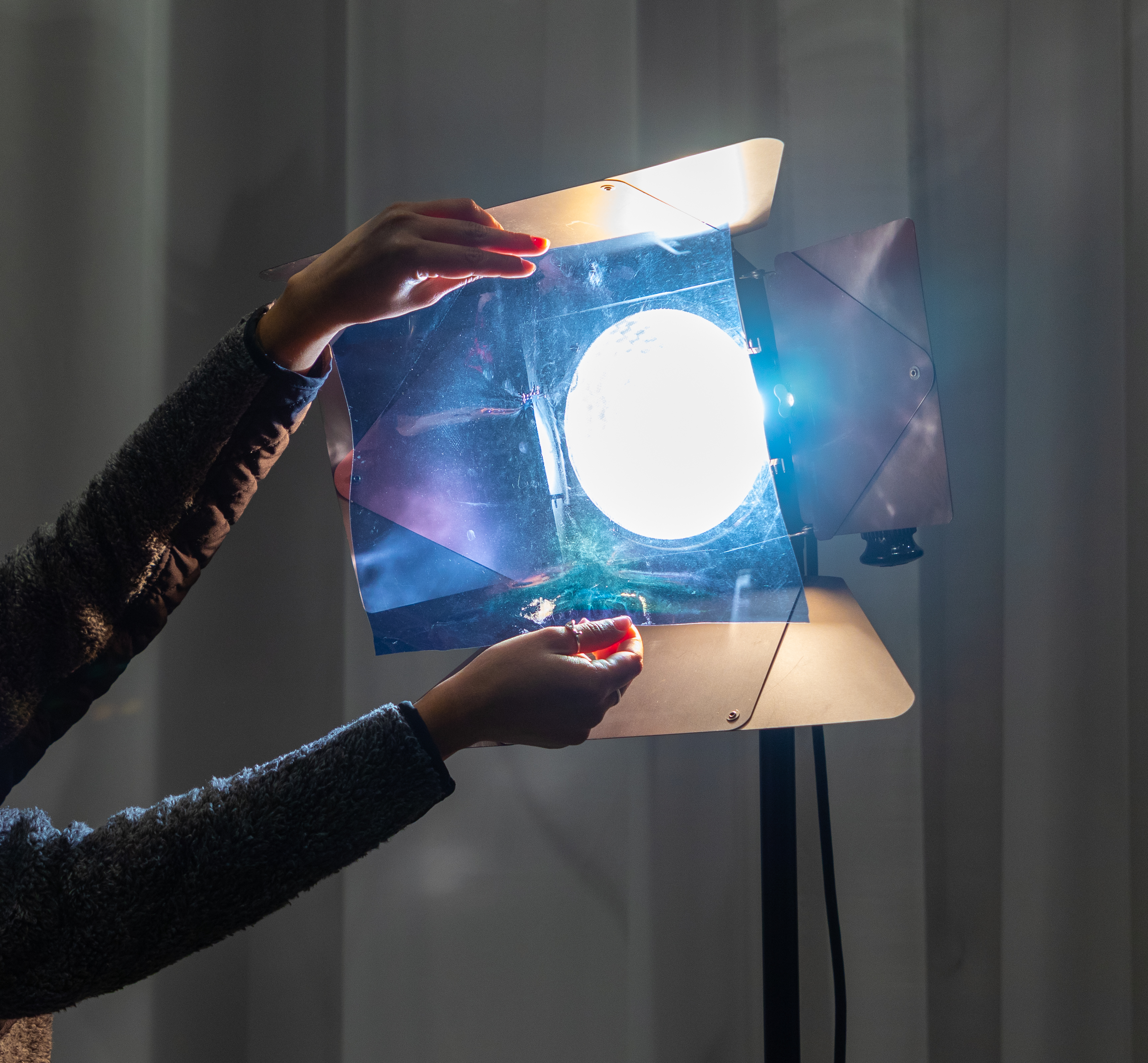
Color gels feel like thin, flexible colored plastic (See figure 9.5.9). Gels are built to withstand high temperatures but can start to warp after multiple uses with incandescent light. Typically, they are put into a frame and placed in front of a light or attached to a light with clips to change the color of the light. If you do not have an LED light that has color options, this is the second-best option to change the color of your lights.


